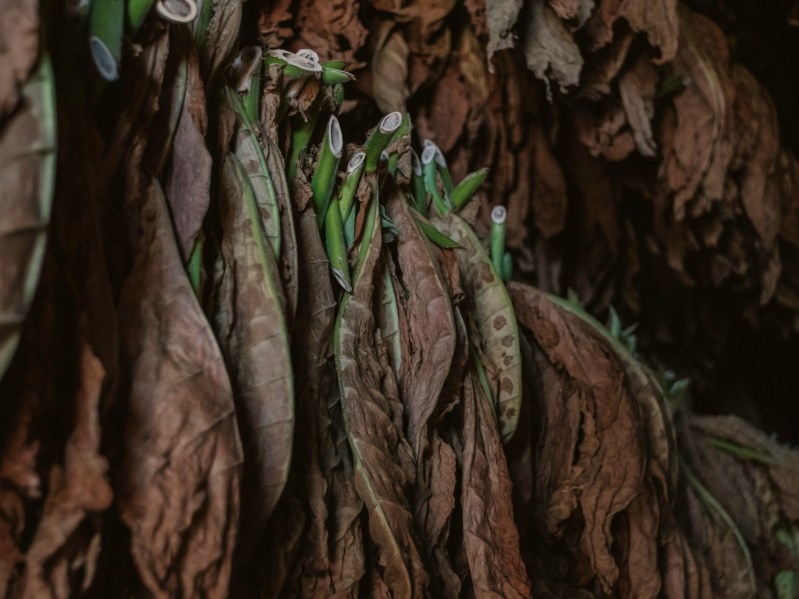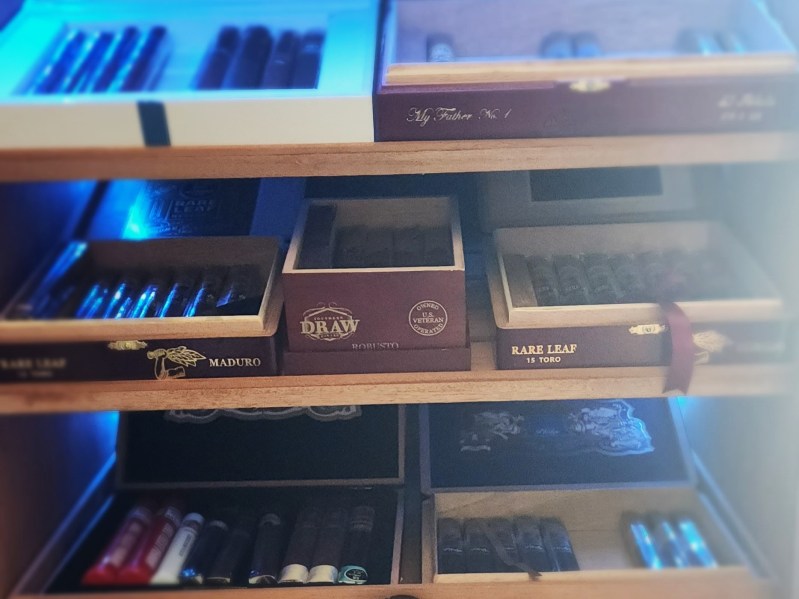
Tobacco plants are grown and cultivated like any other crop. But you might be interested to know that they’re not ready to use in cigars right away. They undergo various fermentation and curing processes, and even then, after cigars are rolled, they’re usually aged for a time before they’re released to the market. The tobacco cultivation process, along with fermentation and curing, significantly alters the composition of the leaves. This is how cigar makers and blenders create the myriad of cigar types. Sun-grown tobacco, for example, is grown with total exposure to the sun, using no shade or protection from the heat or its rays. That results in thick, full-bodied leaves with a unique flavor profile. It’s pretty interesting to see the different ways tobacco leaves are grown, so that’s what we will explore here. Let’s dig in.
What is tobacco cultivation, curing, and fermentation?

Cultivation can be described as preparing the land, soil, seedlings and plants for optimal growth. Tobacco plants usually grow in tropical regions with a balanced mix of moisture or watering and dry periods, not just where the leaves dry out but also where they are exposed to direct sunlight. With larger tobacco plants, the leaves are often trimmed or “topped” after reaching a certain size. They’re also maintained in various ways to prevent disease and pests like aphids, beetles, and larvae.
Fermentation involves using moisture, yeast or bacteria to preserve plants, in this case, tobacco leaves. It’s different from curing, which involves drying out or depriving the plants of the same bacteria using salt or environmental techniques. The individual steps of these two methods and the length of exposure time, like a longer curing process, can influence how the tobacco leaves turn out. Perique tobacco grown in Saint James Parish, Louisiana, is fermented for a year or longer in bourbon barrels under high pressure. That process gives it a robust, fruity aroma ideal for pipe tobacco and cigarettes.
Tobacco seeds are planted, cared for, and harvested when fully grown. The leaves are then exposed to fermentation or curing techniques to create the different types. Preparing and curing tobacco is complex, but this is a basic overview of how cigar farms create the tobacco used in cigars and cigarettes.
The three most common methods for curing tobacco involve fire, air, or flue. Flue-curing is when the tobacco leaves are hung in a barn and subjected to hot air to dry them out, removing the moisture and giving them their brown, aged colors and profiles. A fourth method, sun-curing, requires spreading the leaves out on drying racks and leaving them in the sun for an extended period —typically about 10 to 30 days. Asian and Mediterranean tobacco farms use sun-curing because of the local weather, which is very sunny and hot, with limited rain.
Tobacco leaf locations and priming
A popular method of harvesting tobacco leaves after cultivation is priming. In this method, the leaves are removed in smaller increments from distinct sections of the plant as they mature. They’re removed in twos or threes from the bottom of the plant weekly. The tiers or classifications, starting at the top, are Medio Tiempo, Ligero, Viso, Seco, and Volado. Medio Tiempo tobacco is rare, populating the very top leaves of the plant when available, and only about 10% of tobacco plants have them.
The leaves higher up on the plant receive the most sunlight exposure, making them the strongest — these are your Ligero and Medio Tiempo.
Try these:
How tobacco curing and fermentation are used to craft cigars

Cigars are crafted using a blend of tobaccos, including fillers, binders, and wrappers. By mixing and balancing the different types, cigar rollers can create unique experiences. Maduro leaves, for instance, always undergo more prolonged fermentation periods to achieve their dark, oily characteristics.
Here are some of the most popular types of tobacco and the methods used to create them:
Candela
A Cuban tradition that isn’t as popular in today’s market, Candela dominated cigar production in the 1970s. It actually involves using a non-mature leaf, harvested early, which is then cured to lock in chlorophyll levels in the plant. Used as a wrapper leaf, the shell on the outside of the cigar results in a vibrant finish with a green tint. Candela cigars are mellow and sweet and have many earth and grassy flavors.
Candela cigars to try:
Fire-cured
As the name implies, fire-cured tobacco is cured in a barn and infused with the essence of a smoldering fire. The tobacco leaves are hung like usual to dry out. However, a fire using various hardwood sources like maple, oak, or hickory is tended nearby, giving the leaves a definitive smoky flavor. If you like scotch or bourbon, you’ll love these cigars.
Fire-cured cigars to try:
Maduro
Maduro is not a natural type of tobacco leaf. It’s created using unique fermentation to achieve darker colors and flavor profiles. Outside of natural or Connecticut Shade wrappers, Maduro is one of the broadest categories with several types, including Connecticut-Broadleaf, which is darker than its natural counterpart. It’s a common misconception that Maduro tobacco is stronger in flavor and nicotine concentration because it’s so much darker. While most Maduro cigars are medium to full-bodied, they feature rich, hearty flavors like toastiness, dark chocolate, coffee, and beyond.
San Andres and Broadleaf Maduro tobaccos are stalk-cut and cured much longer than others. They’re also exposed to higher levels of heat and pressure, resulting in dark brown and almost black shades.
Maduro cigars to try:
Oscuro
Like Maduro, Oscuro undergoes a long, intense fermentation process that can take years. Comparatively, Oscuro has one of the most prolonged curing periods in the industry. It’s a super dark, almost pitch-black wrapper that introduces remarkably complex flavors.
Oscuro cigars to try:
Perique
Perique tobacco is commonly grown in Louisiana. It is uniquely fermented to create an infused and flavorful leaf. The leaves are fermented in bourbon barrels under pressure, introducing moisture and steadily increasing temperatures. The finished leaf is sweet and smoky and is more often used in cigarettes and cigarillos than cigars.
Perique cigars to try:
Shade
Shade or natural tobacco is the most common in the cigar world, and it’s grown all over in places like Connecticut, Nicaragua, Ecuador and the Dominican Republic. After the leaves are cultivated and harvested, they’re hung in cigar fields, similar to how tobacco is cured in a barn, except they’re covered in durable fabric like cheesecloth to block direct sunlight. Shade leaves are much thinner than other types, such as Maduro. They’re also mellow in flavor and profile, delivering a smooth, creamy experience in blends.
Shade cigars to try:
Stalk-cut
Stalk-cut tobacco is treated differently during cultivation and harvesting. Instead of priming, which involves harvesting the leaves a little at a time and in smaller increments, the tobacco plant is cut right at the base, stalk and all and then allowed to wilt. The entire plant is then cured in a barn using lathes. Because the whole plant is used, stalk-cut tobacco has some of the more natural characteristics of the plant with earthy flavors.
Stalk-cut cigars to try:
Sun grown
Sun-grown tobacco is exposed to direct sunlight for long periods without protection or shade. The process creates thicker veins in the leaves, darker colors, and sweet, sugary flavors.
Sun-grown cigars to try:
Get to know our expert

Why should you listen to me? It’s a valid question. I smoke cigars all the time, and I have many recommendations and plenty of advice to share with others. But none of those things qualify me as an expert. Instead, it’s the years of experience, the time I’ve invested in the world of cigars, the excellent connections I’ve made with cigar makers and sellers, and the vast wealth of knowledge I’ve gained during that time. I’m always curious about the cigar industry and general production, and I’ve spent hundreds of hours learning about them and trying new cigars and blends. I know what goes into an excellent cigar, and I’ve certainly earned the right to recommend some to others, whether you’re a beginner and this is your first time smoking or have your own cabinet humidor stocked and maintained. Instead of waxing poetic, I’d rather let my recommendations speak for me.



